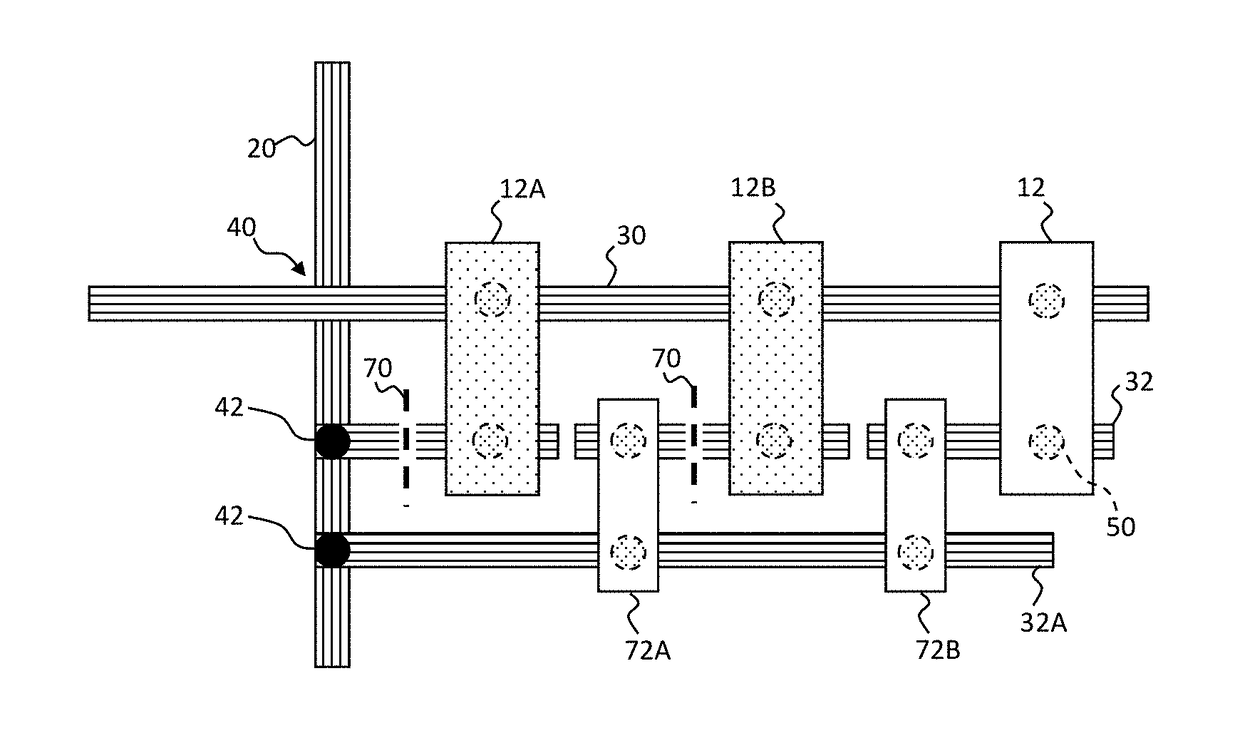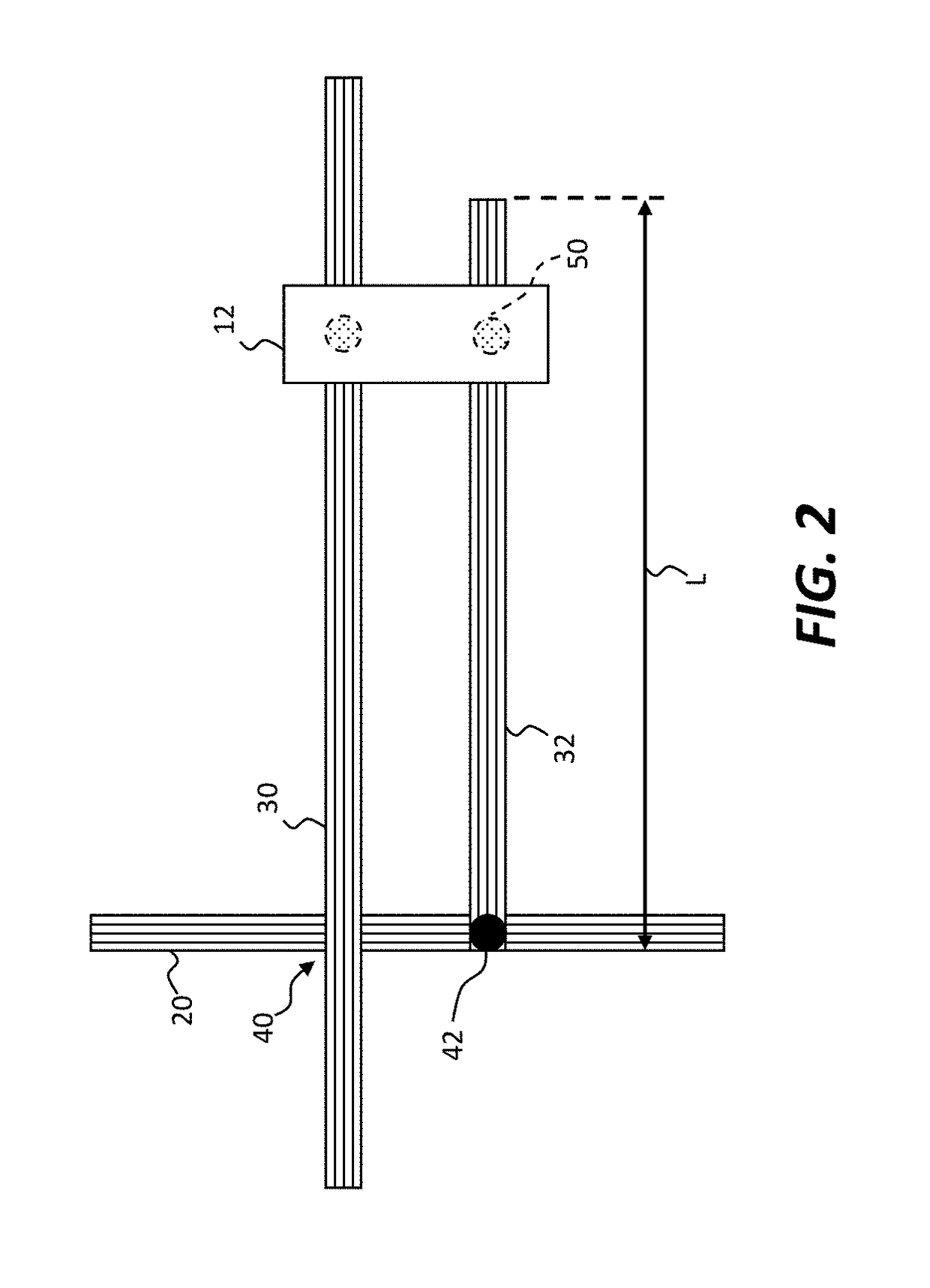Matrix-addressed device repair
- Summary
- Abstract
- Description
- Claims
- Application Information
AI Technical Summary
Benefits of technology
Problems solved by technology
Method used
Image
Examples
Embodiment Construction
[0077]The present invention provides a robust structure and method for providing relatively small high-resolution matrix-addressed devices such as integrated circuit chiplets on a relatively large destination substrate and efficiently and cost-effectively electrically connecting them despite materials and manufacturing process variability and contamination. The structures and methods also provide a way to effectively repair matrix-addressed systems.
[0078]Referring to the perspective of FIG. 1, in an embodiment of the present invention, a repairable matrix-addressed system 10 includes a system substrate 18, an array of electrically conductive row lines 30 disposed over the system substrate 18, and an array of electrically conductive column lines 20 disposed over the system substrate 18. The system substrate 18 can be a multi-layer substrate with conductive wires in different layers. The row lines 30 extend over the system substrate 18 in a row direction and the column lines 20 extend...
PUM
 Login to View More
Login to View More Abstract
Description
Claims
Application Information
 Login to View More
Login to View More - Generate Ideas
- Intellectual Property
- Life Sciences
- Materials
- Tech Scout
- Unparalleled Data Quality
- Higher Quality Content
- 60% Fewer Hallucinations
Browse by: Latest US Patents, China's latest patents, Technical Efficacy Thesaurus, Application Domain, Technology Topic, Popular Technical Reports.
© 2025 PatSnap. All rights reserved.Legal|Privacy policy|Modern Slavery Act Transparency Statement|Sitemap|About US| Contact US: help@patsnap.com



